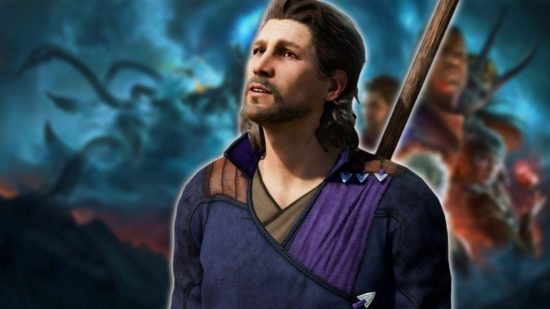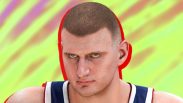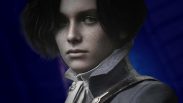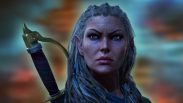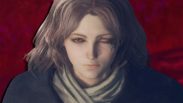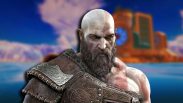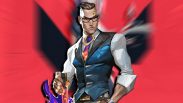What is the best Baldur’s Gate 3 party? There’s a lot (and we mean a lot) of moving parts when it comes to making a Baldur’s Gate 3 team composition. From the staggering 12 classes and 46 subclasses to choose from, to the many companions that can accompany you, and how these come together to aid in combat, social interactions, and exploration. Luckily, we’ve got you covered with the Baldur’s Gate 3 best party that you can make from start to end.
When it comes to making the best Baldur’s Gate 3 party, your first stop should be understanding the horde of complex Baldur’s Gate 3 classes. Not only do these dictate how your own character plays, but your companions are also categorized by classes and subclasses. It’s the balance of these classes that will make or break your Baldur’s Gate 3 team composition. But fret not, if all the choices are overwhelming then you need only look at our Baldur’s Gate 3 best class tier list to help you decide.
Best Baldur’s Gate 3 party
The best Baldur’s Gate 3 party and team composition is:
- Paladin main character
- Shadowheart (Cleric)
- Gale (Wizard)
- Astarion (Rogue)
This will give you a great distribution of combat effectiveness – complete with healing, damage and support – as well as social interactions and world exploration that will be able to carry you through the full Baldur’s Gate 3 length. Once you’ve leveled each character up and invested in them, this team composition is incredibly strong. It’s worth remembering that the best team composition will allow you to cover combat, dialogue, and exploration, though only a carefully thought-out team can effectively cover all roles.
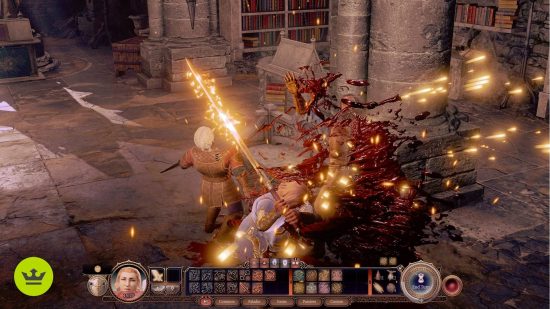
Firstly, we’d recommend playing as a Paladin for this team composition since, not only are they simply one of the best classes in the game, but they also excel in both combat and dialogue. Given there’s more roles you need to fill than you have space in your party, you need a class like the Paladin that can cover multiple areas very well. You can get up in the faces of your enemies, dealing heavy melee and magic damage all while tanking and supporting your team. As for Paladin subclasses, we’d recommend Oath of the Ancients or Oath of Vengeance. Just remember not to break your oath, unless you’d like to be an Oathbreaker Paladin, of course.
It’s also nice to have your own character lead the narrative; while Minthara is a Drow Paladin that could be used to fill this spot in the best Baldur’s Gate 3 party, role-playing as your own character is often more immersive.
Next, we recommend Shadowheart – the Cleric companion – as a support character in your party. Every team needs support and healing, such as a Bard, Cleric, or Druid to succeed, and Shadowheart is the perfect pick given the other party member options available to us. Shadowheart is a superb support that can heal you from range in a pinch. Given her armor proficiency, Shadowheart can either stay at range or charge in alongside the Paladin. As for Cleric subclasses, we recommend Life Domain for Shadowheart to improve her healing. With how strong she is, it’s no surprise that Shadowheart is one of the best Baldur’s Gate 3 companions that is used in nearly every strong party composition.
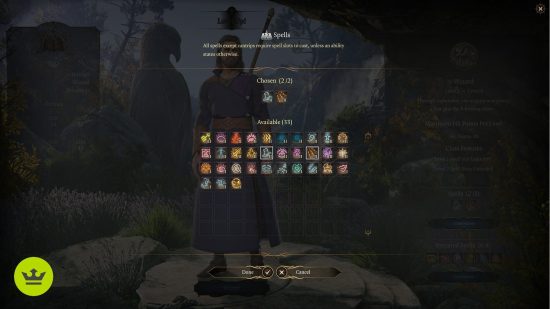
From here, Gale – the Wizard companion – is a devastating ranged caster that fills the main damage dealer role in the best Baldur’s Gate 3 party. We’d recommend choosing the Evocation School subclass for Gale so you’re not accidentally damaging your own team, which comes in handy when your allies are surrounded. While you could opt for a melee damage dealer, such as the Fighter Lae’zel, we’d recommend a ranged caster like Gale instead as he has access to many of the best Baldur’s Gate 3 spells. If you’re not a fan of Gale, then you could also pick Wyll. As a Warlock, Wyll can also fill the ranged damage dealer role well.
Last but by no means least, you’ll need a sub-DPS and utility character. This is where Astarion comes in. As the only Rogue companion, Astarion is a great pick, not only for some extra damage in combat, particularly if you’re a fan of stealth, but also due to his prowess in exploration. For example, Astarion can lockpick which is invaluable when it comes to unlocking new areas or opening locked chests that contain precious loot. And, how could you not love Astarion? That’s reason alone to bring him along. We recommend either the Thief or Assassin Rogue subclass for Astarion to further enhance his damage.
With the best Baldur’s Gate 3 party and team composition, you’ll be able to get through any hurdle you come across without having to rearrange and respec characters. Whether it be a tough combat encounter, a challenging dialogue check, or you simply want to uncover secrets while exploring, you’re all sorted. You’ll have access to all the necessary roles, all the Baldur’s Gate 3 best spells, and also a great cast of characters to get to know.

However, there are also some alternative BG3 party compositions that you can use if you’d rather. This is particularly important if you don’t want to play as a Paladin. We’ve also got the best Baldur’s Gate 3 build for each class, so you have an idea of how to play no matter which party setup you go for.
Bard MC
- Bard/Ranger main character – utility/DPS
- Karlach (Barbarian) – tank/DPS
- Wyll (Warlock) – DPS/dialogue
- Shadowheart (Cleric) – support
Sorcerer MC
- Sorcerer main character – DPS/dialogue
- Lae’zel (Fighter) – tank/DPS
- Jaheira/Shadowheart – support
- Astarion (Rogue) – utility/DPS
Fighter MC
- Fighter main character – tank/DPS
- Wyll (Warlock) – DPS/dialogue
- Astarion (Rogue) – utility/DPS
- Shadowheart (Cleric) – support
Cleric MC
- Cleric main character – support
- Gale (Wizard) – DPS
- Wyll (Warlock) – DPS/dialogue
- Astarion (Rogue) – utility/DPS

Rogue MC
- Rogue main character – utility/DPS
- Karlach or Lae’zel (Fighter) – tank/DPS
- Shadowheart (Cleric) – support
- Wyll (Warlock) – DPS/dialogue
Warlock MC
- Warlock main character – DPS/dialogue
- Lae’zel or Karlach (Fighter) – tank/DPS
- Shadowheart (Cleric) – support
- Astarion – utility/DPS
Druid MC
- Druid main character – support/utility
- Lae’zel or Karlach (Fighter) – tank/DPS
- Wyll (Warlock) – DPS/dialogue
- Astarion (Rogue) – utility/DPS
Barbarian/Fighter/Monk MC
- Barbarian/Fighter/Monk main character – tank/DPS
- Shadowheart (Cleric) – support
- Wyll (Warlock) – DPS/dialogue
- Astarion (Rogue) – utility/DPS
Ranger MC
- Ranger main character – DPS/utility
- Karlach or Lae’zel (Fighter) – tank/DPS
- Shadowheart (Cleric) – support
- Wyll (Warlock) – DPS/dialogue
Given all the companions and classes available to you, there are hundreds, if not thousands of team compositions available if you’re not a fan of the best Baldur’s Gate 3 party that we’ve recommended.
In fact, here’s a handy list of all the class roles so you know what combinations you can make:
| Tank/DPS Hybrid | Dialogue Specialist | Utility | Support/Healer | Spellcaster |
| Barbarian | Bard | Bard | Bard | Sorcerer |
| Fighter | Paladin | Ranger | Cleric | Warlock |
| Monk | Sorcerer | Rogue | Druid | Wizard |
| Paladin | Warlock | Paladin | ||
| Druid |
Although there are frequently clearly defined roles, such as the Bard generally being a support character (that is great for dialogue outside of combat), that isn’t to say they can’t overlap.
For example, there’s nothing wrong with having your Bard or Cleric also dealing a little bit of damage when needed. Likewise, Paladins can be incredibly tanky and supportive, but also capable of some pretty great damage.
It’s important to pick a party composition that effectively covers all the roles, and to this, your team must overlap roles. That’s why we recommend the best Baldur’s Gate 3 party above, as it covers all the necessary roles with the four-character party limit.

Why does team composition matter in Baldur’s Gate 3?
Having the best Baldur’s Gate 3 party and team composition is crucial if you want to have the easiest time during combat encounters, dialogue, and exploration. Though there are Baldur’s Gate 3 difficulty settings, BG3 is huge and you won’t be able to experience everything without a team that can cover all bases.
For example, without a utility character like a Bard, Rogue, or Ranger, you’ll miss out on locked areas and loot, some of which is vital for alternative quest steps. Likewise, sometimes you can change the direction of the main and side quests with a successful speech check, which is where Charisma scaling characters come into play. If you want the best chance to experience all the alternative methods of completing activities, then it’s worth considering the best party composition.
Likewise, turn-based combat can be an incredibly big challenge at times, even more so for those who don’t have much experience with turn-based combat. As such, having a strong, well-rounded party will make completing tough encounters and bosses that much easier.
At the end of the day though, Baldur’s Gate 3 is all about role-playing. If you’d rather have a team made up of all your favorite characters, then do what works for you. The most important part is that you’re meeting all the requirements you have for a team, even if it doesn’t necessarily result in the most optimal setup.
And that’s all you need to know for the best Baldur’s Gate 3 party and team composition. Although BG3 will undoubtedly eat up most of your time for the next few months, with Wargamer’s Baldur’s Gate 3 review highlighting its accomplishments, there’s always more of the best RPG games to play next.
